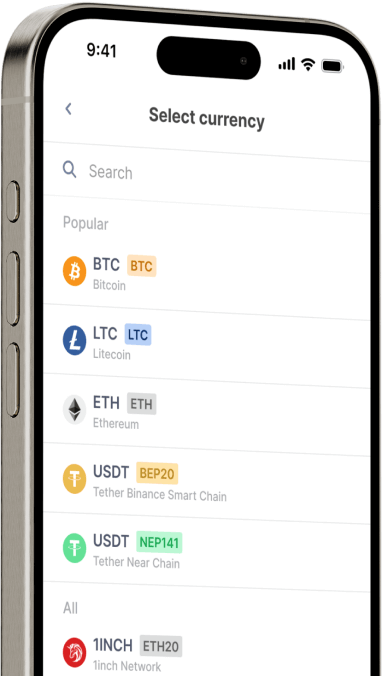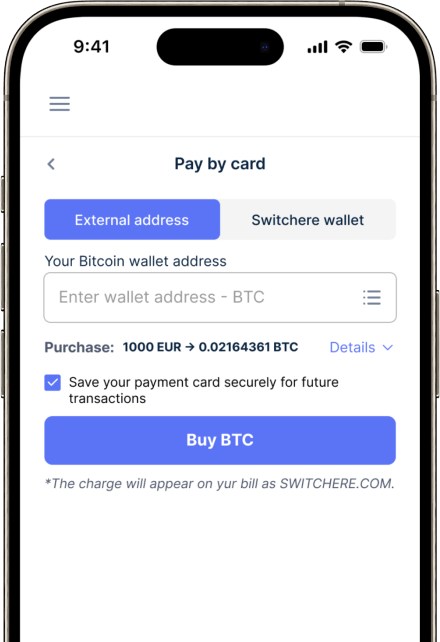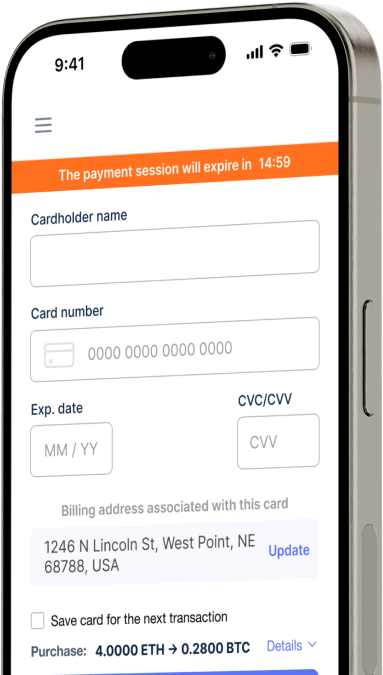전환하다
Singapore Dollar (SGD)에서 Balancer (BAL)로 즉시
Switchere에서 Balancer (BAL)로 Singapore Dollar (SGD)를 간편하게 구매하고 빠르고 안전한 거래의 혜택을 누리세요.
정보
Balancer (BAL)
Balancer(BAL)는 매우 유연한 자동화된 시장 조성자(AMM) 및 유동성 프로토콜로 기능하는 탈중앙화 금융(DeFi) 인프라의 핵심 요소입니다. 종종 50/50 자산 쌍을 요구하는 전통적인 AMM과 달리, Balancer의 핵심 혁신은 스마트 풀이라고도 알려진 맞춤형 다중 토큰 유동성 풀을 사용하는 것입니다. 이를 통해 누구나 자산이 특정 가중 비율로 유지되는 자체 균형 포트폴리오 또는 탈중앙화 인덱스 펀드를 만들 수 있습니다. 이 디자인은 거래자에게 깊고 프로그래밍 가능한 유동성을 제공할 뿐만 아니라, 풀을 의도한 가중치로 되돌리는 차익 거래 기회를 창출하여 탈중앙화 네트워크에서 유동성 공급자를 위한 포트폴리오 관리를 효과적으로 자동화합니다.
프로토콜이 Balancer V2로 진화하면서 획기적인 단일 볼트 아키텍처가 도입되었습니다. 이 디자인은 AMM 로직을 토큰 관리 및 회계에서 분리하여 가스 효율성과 자본 효율성을 대폭 향상시킵니다. Balancer 생태계 내의 모든 거래는 이 단일 볼트를 통해 라우팅되어 복잡한 다중 홉 거래를 훨씬 낮은 거래 비용으로 실행할 수 있게 합니다. 이 프로토콜의 네이티브 디지털 자산인 BAL은 중요한 거버넌스 토큰 역할을 합니다. BAL 유틸리티 토큰 보유자는 온체인 거버넌스에 참여하여 프로토콜 업그레이드, 수수료 변경에 투표하고 유동성 채굴 보상 할당을 지시함으로써 이 필수적인 Web3 인프라의 미래를 형성할 수 있습니다.
다른 150개 이상의 암호화폐를 Singapore Dollar (SGD)에 구매하기
Singapore Dollar (SGD)의 다른 코인
-
SGD에 대한 ZRX
-
SGD에 대한 1INCH
-
SGD에 대한 AAVE
-
SGD에 대한 ACH
-
SGD에 대한 ALGO
-
SGD에 대한 TLM
-
SGD에 대한 ANKR
-
SGD에 대한 APE
-
SGD에 대한 NFT
-
SGD에 대한 API3
-
SGD에 대한 APT
-
SGD에 대한 ARPA
-
SGD에 대한 AUDIO
-
SGD에 대한 AVAX
-
SGD에 대한 AVAX
-
SGD에 대한 AXS
-
SGD에 대한 BADGER
-
SGD에 대한 BAL
-
SGD에 대한 BNT
-
SGD에 대한 BAT
-
SGD에 대한 BNB
-
SGD에 대한 BSW
-
SGD에 대한 BSV
-
SGD에 대한 BLUR
-
SGD에 대한 BONE
-
SGD에 대한 CTSI
-
SGD에 대한 CELR
-
SGD에 대한 CELO
-
SGD에 대한 CEL
-
SGD에 대한 LINK
-
SGD에 대한 CHZ
-
SGD에 대한 CHR
-
SGD에 대한 C98
-
SGD에 대한 COMP
-
SGD에 대한 CFX
-
SGD에 대한 PEOPLE
-
SGD에 대한 CVX
-
SGD에 대한 ATOM
-
SGD에 대한 CTC
-
SGD에 대한 CRV
-
SGD에 대한 DAI
-
SGD에 대한 DASH
-
SGD에 대한 MANA
-
SGD에 대한 DENT
-
SGD에 대한 DGB
-
SGD에 대한 DYDX
-
SGD에 대한 XEC
-
SGD에 대한 EOS
-
SGD에 대한 ETC
-
SGD에 대한 ENS
-
SGD에 대한 ETHW
-
SGD에 대한 FET
-
SGD에 대한 FIL
-
SGD에 대한 FLOKI
-
SGD에 대한 GALA
-
SGD에 대한 GNO
-
SGD에 대한 ONE
-
SGD에 대한 HBAR
-
SGD에 대한 HOT
-
SGD에 대한 HOOK
-
SGD에 대한 ICX
-
SGD에 대한 ILV
-
SGD에 대한 IMX
-
SGD에 대한 INJ
-
SGD에 대한 ICP
-
SGD에 대한 IOST
-
SGD에 대한 IOTX
-
SGD에 대한 JASMY
-
SGD에 대한 JST
-
SGD에 대한 KAVA
-
SGD에 대한 KCS
-
SGD에 대한 KSM
-
SGD에 대한 KNC
-
SGD에 대한 LDO
-
SGD에 대한 LQTY
-
SGD에 대한 LPT
-
SGD에 대한 LOOKS
-
SGD에 대한 LRC
-
SGD에 대한 LUNA
-
SGD에 대한 MKR
-
SGD에 대한 MASK
-
SGD에 대한 EGLD
-
SGD에 대한 ALICE
-
SGD에 대한 NEAR
-
SGD에 대한 XEM
-
SGD에 대한 NEXO
-
SGD에 대한 NOT
-
SGD에 대한 NMR
-
SGD에 대한 OKB
-
SGD에 대한 OMG
-
SGD에 대한 ONT
-
SGD에 대한 EDU
-
SGD에 대한 OP
-
SGD에 대한 OGN
-
SGD에 대한 CAKE
-
SGD에 대한 PAXG
-
SGD에 대한 PENDLE
-
SGD에 대한 DOT
-
SGD에 대한 POL
-
SGD에 대한 QTUM
-
SGD에 대한 QNT
-
SGD에 대한 RDNT
-
SGD에 대한 XRD
-
SGD에 대한 RVN
-
SGD에 대한 REN
-
SGD에 대한 RSR
-
SGD에 대한 RLC
-
SGD에 대한 RPL
-
SGD에 대한 SFP
-
SGD에 대한 SHIB
-
SGD에 대한 SKL
-
SGD에 대한 SXP
-
SGD에 대한 STND
-
SGD에 대한 STG
-
SGD에 대한 XLM
-
SGD에 대한 GMT
-
SGD에 대한 STORJ
-
SGD에 대한 STMX
-
SGD에 대한 SUSHI
-
SGD에 대한 SNX
-
SGD에 대한 USDT (Polygon)
-
SGD에 대한 USDT (AVAC)
-
SGD에 대한 USDT (BEP20)
-
SGD에 대한 USDT (ERC20)
-
SGD에 대한 USDT (SPL)
-
SGD에 대한 USDT (NEP141)
-
SGD에 대한 USDT (FA2)
-
SGD에 대한 USDT (TRC20)
-
SGD에 대한 USDT (JETTON)
-
SGD에 대한 XTZ
-
SGD에 대한 GRT
-
SGD에 대한 SAND
-
SGD에 대한 TFUEL
-
SGD에 대한 THETA
-
SGD에 대한 RUNE
-
SGD에 대한 TON
-
SGD에 대한 TUSD (BEP20)
-
SGD에 대한 TUSD (TRC20)
-
SGD에 대한 TWT
-
SGD에 대한 UOS
-
SGD에 대한 UMA
-
SGD에 대한 UNI
-
SGD에 대한 USDC (Polygon)
-
SGD에 대한 USDC (SPL)
-
SGD에 대한 USDC (OP)
-
SGD에 대한 USDC (BEP20)
-
SGD에 대한 USDC (AVAC)
-
SGD에 대한 USDC (ARB)
-
SGD에 대한 USDC (ERC20)
-
SGD에 대한 VET
-
SGD에 대한 VRA
-
SGD에 대한 WAXP
-
SGD에 대한 WOO
-
SGD에 대한 WLD
-
SGD에 대한 WBTC
-
SGD에 대한 WMINIMA
-
SGD에 대한 XDC
-
SGD에 대한 YFI
-
SGD에 대한 YGG
-
SGD에 대한 ZIL
Balancer (BAL) 구매 방법
자주 묻는 질문
-
싱가포르 달러(SGD)로 밸런서(BAL)를 구매하는 가장 직접적인 방법은 무엇인가요?
가장 직접적인 방법은 직접적인 SGD/BAL 거래 쌍 또는 SGD에 대한 법정화폐 온램프를 제공하는 규제된 암호화폐 거래소를 이용하는 것입니다. 사용자는 일반적으로 FAST 이체 또는 PayNow와 같은 싱가포르 기반 결제 방법을 사용하여 계정에 자금을 입금할 수 있습니다. 이 과정은 KYC/AML 준수를 완료해야 하며, 그 후에 중간 통화 변환을 피하고 SGD에서 BAL로 직접 디지털 자산을 구매할 수 있습니다.
-
SGD를 BAL로 변환할 때 어떤 종류의 수수료가 발생하나요?
일반적으로 세 가지 종류의 수수료가 있습니다: 1) 입금 수수료: 일부 거래소는 SGD 입금에 대해 수수료를 부과할 수 있지만, FAST 이체는 종종 무료입니다. 2) 거래 수수료: 거래소에서 부과하는 거래 가치의 일정 비율로, 종종 메이커-테이커 모델과 거래량에 따라 결정됩니다. 3) 출금/네트워크 수수료: BAL은 ERC-20 토큰이므로 거래소에서 개인 디지털 지갑으로 옮길 때 이더리움 네트워크 수수료(가스 요금)가 발생하며, 이는 네트워크 혼잡도에 따라 달라집니다.
-
BAL 토큰을 보유하면 단순한 거래 외에 어떤 유용성을 제공하나요?
BAL 토큰을 보유하면 밸런서 생태계 내에서 상당한 유용성을 부여받습니다. 주로 BAL은 거버넌스에 사용되어 보유자가 밸런서 개선 제안(BIP)에 투표할 수 있게 합니다. 또한, 사용자는 BAL을 잠가 veBAL(투표 위임 BAL)을 받을 수 있으며, 이는 유동성 공급자로서의 보상을 증폭시키고, 프로토콜 거래 수수료의 일부를 받을 자격을 부여하며, 특정 밸런서 풀에 유동성 채굴 배출을 지시할 수 있는 권한을 줍니다.
-
밸런서(BAL)란 무엇이며 디파이(DeFi) 생태계 내에서의 기능은 무엇인가요?
밸런서(BAL)는 이더리움 기반의 선도적인 자동화된 시장 조성자(AMM)인 밸런서 프로토콜의 거버넌스 토큰입니다. 핵심 기능은 토큰 보유자가 프로토콜 업그레이드에 투표하고 veBAL 시스템을 통해 유동성 채굴 보상을 지시할 수 있도록 하는 것입니다. 프로토콜 자체는 사용자가 고도로 맞춤화 가능한 밸런서 풀을 생성할 수 있게 하며, 이는 자체 균형 포트폴리오 및 유동성 공급원 역할을 하여 유연한 가중 풀과 효율적인 볼트 아키텍처로 다른 AMM과 차별화됩니다.
-
SGD에서 BAL로 성공적으로 거래한 후 BAL 토큰을 어떻게 안전하게 보관할 수 있나요?
최적의 보안을 위해, BAL 토큰을 거래소에서 개인 키를 직접 제어하는 비수탁형 디지털 지갑으로 옮기는 것이 좋습니다. 옵션으로는 온라인 위협에 대한 최고의 보안을 제공하는 하드웨어 지갑(예: Ledger, Trezor)을 이용한 콜드 스토리지나, 밸런서와 같은 디파이 프로토콜에 쉽게 접근할 수 있는 소프트웨어 지갑(예: MetaMask, Trust Wallet)이 있습니다. 개인 키나 시드 문구를 절대로 공유하지 마십시오.
-
싱가포르의 트레이더에게 직접적인 SGD/BAL 쌍이 유리한 이유는 무엇인가요?
직접적인 SGD/BAL 거래 쌍은 여러 가지 이점을 제공합니다. 원활한 법정화폐 온램프를 제공하여 트레이더가 USD나 다른 주요 통화로 중간 변환 없이 현지 통화와 PayNow와 같은 익숙한 결제 시스템을 사용할 수 있게 합니다. 이는 환전 수수료와 잠재적인 슬리피지를 최소화하여 밸런서 디파이 프로토콜에 대한 더 자본 효율적인 진입점을 제공합니다. 또한 유동성 공급자가 되거나 거버넌스에 참여하려는 사람들을 위한 프로세스를 단순화합니다.




